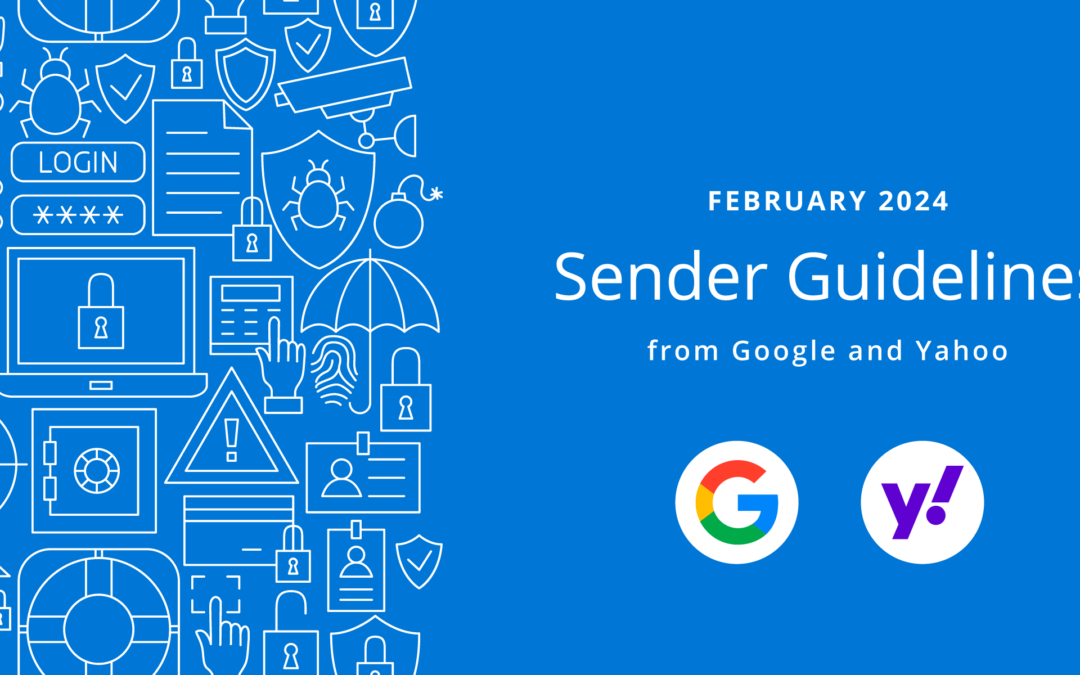Google and Yahoo announced that some of the sender guidelines are going in effect in February of 2024. What does it mean for you? If you are a bulk sender, sending more than 5000 emails per day (and that’s 99% of BigMailer customers), then you need to make sure you adhere to the new guidelines if you want to inbox with Gmail and Yahoo.
Let’s go over the most notable guidelines:
- SPF, DKIM, and DMARC records on a sender domain are needed. You can use this tool to check your sender configuration. And here is an article on how to add DMARC record.
- You will need to be mindful of your complaint rates for Gmail (keep below 0.3%), which are not reported in BigMailer because Gmail doesn’t provide a feedback loop to mailbox providers. The only way to check your complaint rates in Gmail is with Google Postmaster tool. Setup an account and start monitoring if you haven’t already done so.
- 1-click unsubscribe is the most misunderstood guideline. Many think this means when someone clicks on an unsubscribe link in the email they should be instantly unsubscribed, but that’s not what it actually means. The actual unsubscribe links in the email body can’t be 1-click, like the list-unsubscribe header can. This is because some organizations use security bot scans and may auto open and auto-click links, which would result in erroneous and unintentional unsubscribe actions. However, the unsubscribe action should be 1-click AFTER a subscriber clicks on the link in the email – no login walls, no extra feedback required before the unsubscribe action. BigMailer now automatically includes the list-unsubscribe header, but Gmail may not always show the list-unsubscribe header to prevent abuse by spammers. Here is a Google support answer that explains this.
- Use a clear sender identity – don’t impersonate another brand and don’t use a misleading From label. Your sender From label and email should match the branding used in the email body. Using different From labels for the same email address is an example of a bad practice that can get you in trouble with mailbox providers.
- Increase sending volume slowly and maintain a sending schedule without big spikes in volume. If you haven’t used your list in a while, you should start with smaller volume and add 25-30% per day, and avoid big jumps in volume (it may indicate inorganic list growth via a list purchase). If you send infrequently, it would be best to split up your updates into segments sent over multiple days, rather than sending to your entire list once a month or bi-weekly.
- Have a policy for dealing with inactive subscribers. You don’t have to delete them (a sunset policy), but you should reduce your sending frequency to inactive subscribers to continue inboxing. Remember, inactive segment is where a lot of the spam traps are hiding and sending to spam traps can damage your sender reputation.
- Adhere to US CAN-SPAM law (no misleading subject lines, mailing address in the footer, must include unsubscribe link).
- A sender is responsible for verifying a subscriber email before sending. BigMailer now includes built-in email verification on the list import step, embedded forms, and API calls (add, upsert).
If you would like to read more we suggest to review Google’s Email Sender Guidelines.
What is an inactive subscriber? The definition of inactive would depends on your sending frequency. If you send daily, then inactive subscriber is someone who hasn’t opened any of your emails in more than 2 weeks (think a typical vacation). However, we would recommend to exclude anyone who hasn’t opened in 5-6 days from your daily schedule, to ensure better inboxing. Just send to your inactives weekly instead. If your segments are setup correctly, your inactives become actives automatlicallly as soon as they open any of your emails with no additional work from you.
Looking to improve your deliverability and inboxing? Consider sending less frequently to your inactives. Here is an article on advanced deliverability and inboxing tips that describes tactics for managing inactive subscribers.
FAQ: Is my account automatically compliant if I use BigMailer?
If you are sending with BigMailer, you already have a DKIM record in place and list-unsubscribe headers are added automatically. If you are using SES to send emails in BigMailer, you can check if your sender has SPF and DKIM records by going to your SES page (Account link in the header > SES in the menu) and click on a region name if you use more than one.
Use MX Toolbox tool to check your DNS records once they are added – if you don’t see them they may have been added in a wrong place/provider. The tool will also show you where DNS records for your domain are actually stored.
Still have questions about your account readiness? Log into your BigMailer account and reach out via live chat.
Happy email marketing!

